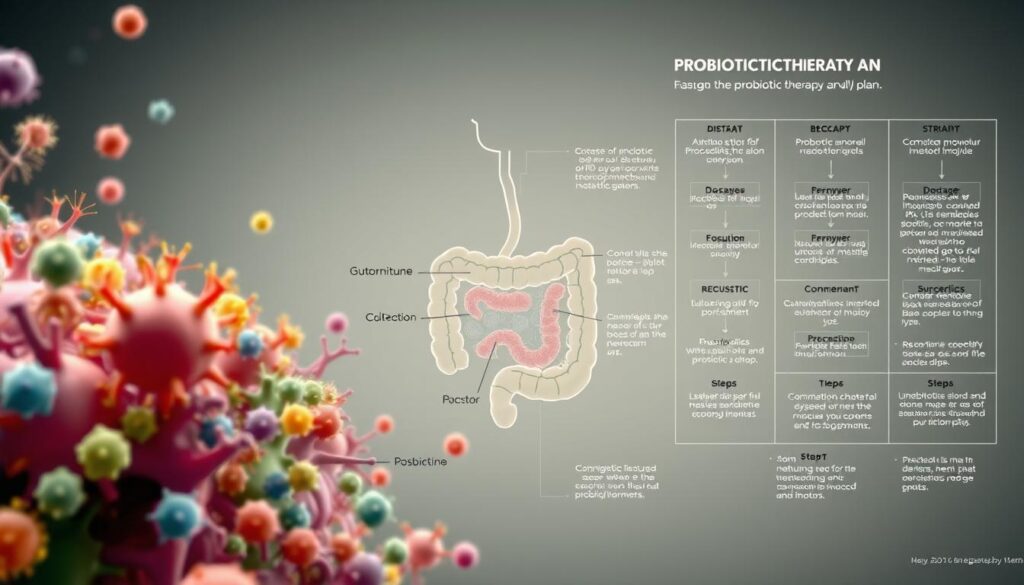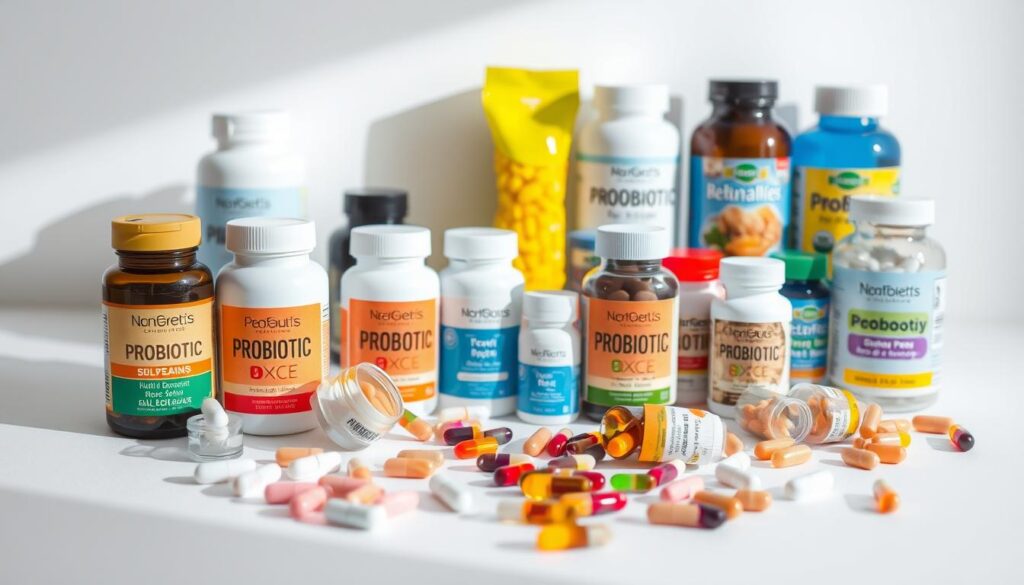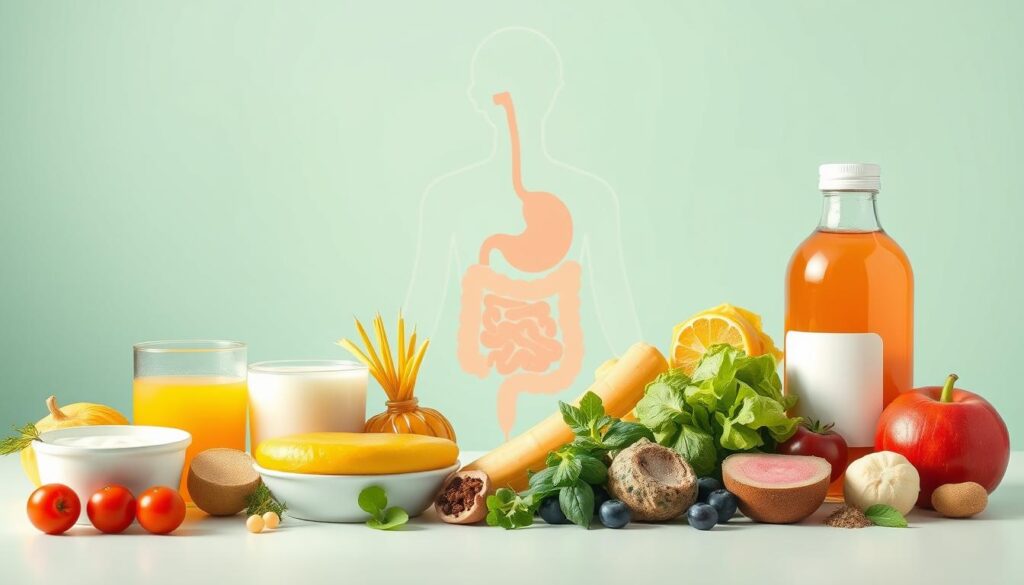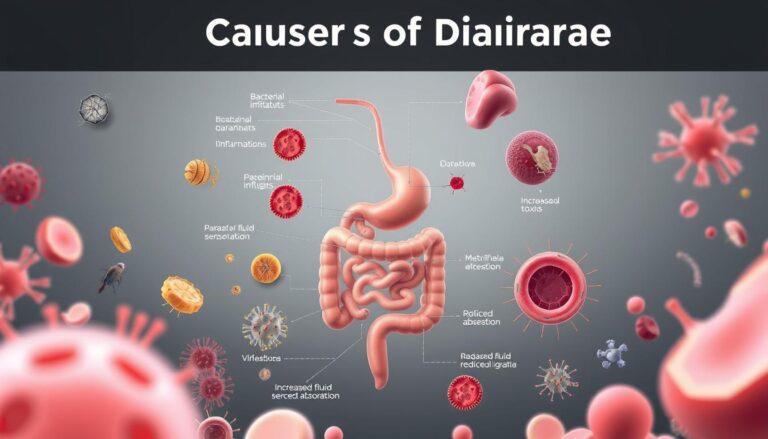Complete Guide to Probiotic Protocols

The morning started like any other until your stomach reminded you of last night’s questionable takeout. Sound familiar? You’re not alone in this gut-wrenching experience. Millions of Americans struggle daily with digestive discomfort and unpredictable bowel movements.
Your gut houses trillions of microorganisms that influence digestion and mood. When this delicate ecosystem falls out of balance, your entire body feels the impact. That’s where probiotic protocols come into play. These structured approaches to introducing beneficial bacteria can transform your gut health protocol from guesswork into science-backed strategy.
The International Scientific Association for Probiotics and Prebiotics defines these helpful microbes as live organisms that provide health benefits when taken in proper amounts. But here’s the catch: not every product labeled “probiotic” delivers real results. Your body needs specific strains in precise doses to experience genuine improvement.
This guide walks you through effective probiotic treatment options tailored to your unique needs. You’ll discover which bacterial strains work best for specific conditions. Learn proper dosing strategies and how to integrate these powerful microorganisms into your daily routine.
Whether you’re battling irritable bowel syndrome, strengthening your immune system, or simply seeking better digestive health, the right probiotic protocols can make all the difference.
Key Takeaways
- Probiotic protocols are structured approaches to introducing beneficial bacteria for improved gut health
- Not all products labeled as probiotics provide proven health benefits – strain specificity matters
- Effective probiotic treatment requires proper identification of bacterial strains and correct dosing
- Your gut microbiome influences digestion, immunity, and mental well-being
- Personalized gut health protocols work better than one-size-fits-all approaches
- Scientific backing from organizations like the International Scientific Association for Probiotics and Prebiotics guides best practices
What Are Probiotic Protocols?
A probiotic therapy plan uses good bacteria to help your health. It’s more than just taking a supplement. It’s a way to keep good bacteria in your gut.
By following a natural probiotic plan, you can improve your gut health. This helps your overall well-being too.
Definition and Importance
Probiotics are live good bacteria that help your health. They are found in foods like yogurt and sauerkraut. You can also buy them in supplements.
Your gut has trillions of tiny living things. A probiotic plan keeps these in balance. If bad bacteria win, you might feel sick or weak.

How They Work in the Body
Probiotics go through your gut and meet your bacteria. They do many good things:
- Stop bad bacteria from growing
- Make substances that fight infections
- Make nutrients for your gut lining
- Make your colon less welcoming to bad microbes
- Make your gut stronger against toxins
Each probiotic strain has its own benefits. Some make vitamins, while others help with digestion. A good plan uses many strains for the best health.
Types of Probiotics Explained
Starting your probiotic journey means learning about the main types of good bacteria. Each type has its own health benefits. Knowing these helps you pick the right probiotics for you.
Lactobacillus
Lactobacillus is a well-studied probiotic for your gut. You can find it in foods like yogurt and kimchi. Lacticaseibacillus rhamnosus GG (LGG) is very effective when you take 10 billion CFU a day. It helps keep your gut healthy and prevents diarrhea from antibiotics.
Bifidobacterium
Bifidobacterium lives in your large intestine and breaks down fiber. Strains like Bifidobacterium animalis lactis DN-173 010 and Bifidobacterium longum 35624 are popular. They help with regular bowel movements and may reduce bloating.

Saccharomyces boulardii
Saccharomyces boulardii is a yeast probiotic. You take 1-10 billion CFU daily for 5-10 days. It’s great for preventing traveler’s diarrhea and helping your gut recover from sickness.
| Probiotic Type | Common Strains | Typical Daily Dose | Primary Benefits |
|---|---|---|---|
| Lactobacillus | L. rhamnosus GG, L. acidophilus | 10-20 billion CFU | Digestive support, immunity |
| Bifidobacterium | B. animalis, B. longum | 5-15 billion CFU | Bowel regularity, fiber digestion |
| Saccharomyces | S. boulardii | 1-10 billion CFU | Diarrhea prevention, gut recovery |
Benefits of Following Probiotic Protocols
Your body has trillions of bacteria. Keeping them in balance can change your health in amazing ways. By following probiotic tips, you can use these tiny helpers to improve your health. They help with digestion and even your mind.
Digestive Health
Probiotics act as your gut’s defense team. They keep bad bacteria away and make your gut stronger. When you use a probiotic plan, good bacteria fill spaces where bad ones might grow.
They make substances that stop bad bacteria and help your gut lining. Studies show probiotics can make diarrhea shorter by over 21 hours. They also lower the chance of long diarrhea by 36%.
Your gut works better when good bacteria help with breaking down food and absorbing nutrients.

Immune System Support
Your gut is home to about 70% of your immune system. That’s why probiotics are key for fighting off sickness. Good bacteria teach your immune system to know the difference between good and bad.
This helps your body not overreact to things it shouldn’t. It keeps you safe from real threats.
Mental Well-being
Your gut and brain are connected. This means your probiotic plan affects your mood and thinking. Probiotics help balance your brain’s chemicals, like serotonin, which makes you happy.
Many people feel happier, less anxious, and clearer-minded when their gut bacteria are healthy.
How to Choose the Right Probiotic
Choosing the right probiotic can be tough with so many options. Knowing what to look for helps you pick the best one. Not every probiotic works the same for everyone.
Understanding Strain Specificity
Each probiotic strain has its own benefits. Lactobacillus acidophilus helps with vaginal health. Bifidobacterium infantis is good for irritable bowel syndrome. Make sure the strains on the label match your health needs.
Dosage Recommendations
Probiotics come in different doses, from 1 billion to over 50 billion CFUs. But, more CFUs don’t always mean better. Studies show doses between 1-10 billion CFUs are usually best. Start with a small dose and increase as needed.
Quality and Safety Indicators
When picking the best probiotics, look for these signs:
- Products with CFU count at expiration, not manufacture date
- “Live and active cultures” statement with at least 1 billion CFUs
- Good Manufacturing Practices (GMP) certification
- USP Verified or Non-GMO Project Verified seals
Also, check if the probiotic needs to be kept cold. Some need refrigeration to stay potent. Remember, some labels might list total weight, not just live cells. Choose products from trusted brands that promise live cultures until the expiration date.
Implementing Probiotic Protocols
Starting a natural probiotic regimen is easy. You can get good bacteria from food or use supplements. Both ways have benefits, and many people mix them for best results.
Dietary Sources of Probiotics
Your kitchen can be a great source of good bacteria. Fermented dairy products like yogurt and kefir are full of live cultures. Unpasteurized cheeses like Gouda and Swiss also have probiotics.
For those who don’t eat dairy, there are plenty of options. Sauerkraut and kimchi are full of probiotics and fiber. Miso, tempeh, and natto are great for protein and probiotics. Kombucha and fermented pickles add variety to your diet.

Probiotic Supplements Overview
Supplements make it easy to get probiotics. They come in:
- Powders that mix into drinks
- Capsules for easy use
- Chewable tablets with nice flavors
- Liquid formulas for better absorption
Today’s supplements have special coatings. This means you can take them without food and they stay strong.
Tips for Effective Usage
Being consistent is key. Choose a time to take them every day. Probiotics don’t stay in your gut forever. You need to keep taking them to keep your gut healthy.
Potential Side Effects and Considerations
Probiotics are safe for most people. But, it’s good to know about possible side effects when starting them. This helps you make smart choices for your health.
Common Reactions
Starting probiotics might make your body adjust. You might feel some mild side effects at first:
- Gas and bloating – usually goes away in a few days
- Mild diarrhea or loose stools
- Upset stomach or cramping
- Changes in how often you go to the bathroom
These side effects often happen in the first week. Starting with a small dose and slowly increasing it can help. Studies show probiotics can cut down on digestive problems by 51% if taken soon after antibiotics.
When to Consult a Healthcare Professional
Some people should talk to a doctor before starting probiotics. This includes:
- Those with a weakened immune system
- Parents of babies under 2 years old
- People over 65 years old
- Those with serious health issues
- Those on medicines that weaken the immune system
If you have severe symptoms like a high fever, blood in your stool, or signs of infection, get help right away. Though rare, probiotics can sometimes cause serious problems like more infections or bad reactions with medicines.
Probiotic Protocols for Specific Conditions
Different health conditions need different probiotics. Your gut health plan should fit your needs, whether it’s for digestion or skin. A tailored probiotic plan can really help manage these issues.
Gut Disorders (IBS, IBD)
If you have IBS or IBD, some probiotics can help. Saccharomyces boulardii and Lactobacillus rhamnosus GG are good for kids with stomach problems. Your plan might include these at doses suggested by doctors.
Allergies and Skin Conditions
Millions worldwide have skin issues like atopic dermatitis. Research with 7,000 babies showed probiotics can lower the risk of this condition by over 6%. For skin health, pick specific probiotic strains.
| Probiotic Strain | Effectiveness | Recommended For |
|---|---|---|
| Lactobacillus rhamnosus | High | Atopic dermatitis prevention |
| Lactobacillus paracasei | High | Reducing skin inflammation |
| Lactobacillus reuteri | Low | General gut support |
| Lactobacillus acidophilus | Low | Digestive health |
Children with bad atopic dermatitis can get better with the right gut plan. Think about their age, how bad it is, and their symptoms when picking probiotics.
Combining Probiotics with Other Treatments
Looking to get the most out of probiotics? Mixing them with other treatments can boost their benefits. A well-rounded health plan with probiotics and other treatments can help you reach your wellness goals. This way, your probiotic plan works better with other health steps.
Synergistic Effects with Prebiotics
Probiotics and prebiotics together are called synbiotics. They make your gut bacteria stronger. Prebiotics, like inulin and fructo-oligosaccharides, feed the good bacteria. This helps the probiotics grow and multiply in your gut.
| Prebiotic Source | Benefits When Combined | Daily Amount |
|---|---|---|
| Chicory Root (Inulin) | Enhances Bifidobacteria growth | 5-10 grams |
| Jerusalem Artichokes | Supports Lactobacillus activity | 3-5 grams |
| Garlic | Promotes diverse bacterial growth | 2-4 grams |
| Bananas | Gentle prebiotic support | 1-2 medium |
Integrating into Holistic Health Plans
Probiotics are more effective when part of a big wellness plan. Add them to stress management, exercise, and enough sleep. These habits help your gut health a lot. You might also try probiotic creams for skin or mouth probiotics for teeth, to help more areas of your body.
Conclusion: Embracing Probiotic Protocols
Starting your journey with probiotic protocols can change your health for the better. These good bacteria help your digestive system, immune system, and even your mind. The important thing is to find a method that works for you.
Final Thoughts on Probiotic Health
Probiotics work best if you use them every day. You can find them in supplements like Culturelle or Garden of Life. You can also get them from foods like Activia yogurt or GoodBelly drinks.
Each type of probiotic has its own benefits. For example, Lactobacillus rhamnosus GG helps with digestion. Bifidobacterium longum boosts your immune system.
Encouragement for Personalization in Protocol Adherence
Your probiotic plan should match your health goals and needs. Talk to your doctor to pick the right strains for you. Your age, diet, and health can affect how you respond to different probiotics.
Begin with a simple plan and change it as needed. Building a healthy gut takes time, but the benefits are worth it.






